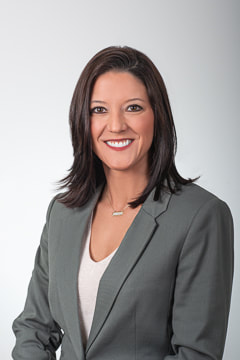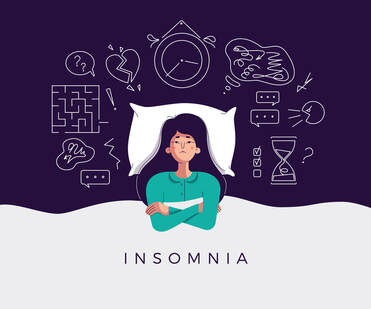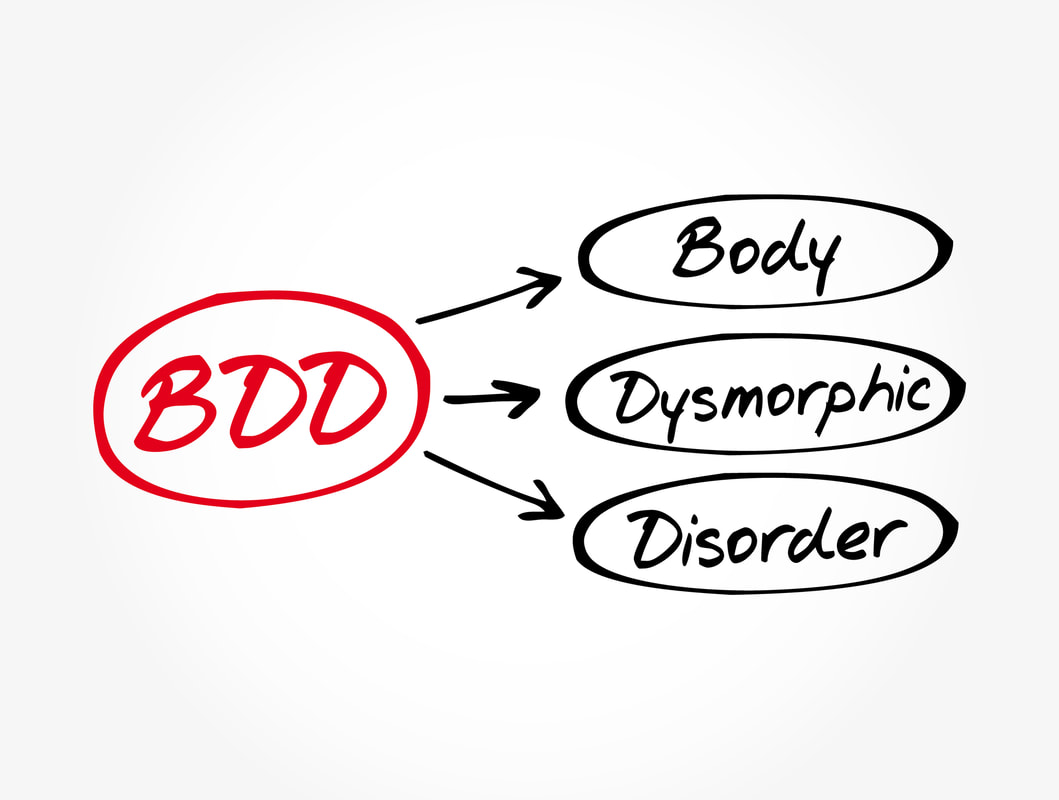|
Doctor of Psychology
Licensed Clinical Psychologist To make an appointment with Dr. Heilman, please call 630-570-0050. You can also email [email protected].
Specializes In:Depression, generalized anxiety, social anxiety, panic disorder, OCD, relationship issues, self-compassion, communication skills, anger management, life transitions, grief/loss, and trauma.
Ages Served: Adults, Older Adults |
Professional Experience
I received my Bachelor of Science degree from the University of Illinois in Urbana-Champaign and my Doctoral degree in Clinical Psychology from Illinois School of Professional Psychology. During my practicum and internship experiences, I worked in a variety of settings with a diverse population of all ages. I gained experience in diagnostic assessment, group therapy, individual therapy, and case management. During my Post Doc years and beyond, I have attended didactics and received supervision as I developed my specialties in the areas listed below.
Specializations and Treatment Approach
I currently treat:
Social Anxiety Disorder (SAD)
Obsessive-Compulsive Disorder (OCD)
Generalized Anxiety Disorder/Worry (GAD)
Depression
Bipolar Disorder
Panic Disorder
Trauma/Post-Traumatic Stress Disorder
I work with clients who are 18 years of age and older. I primarily treat issues related to depression, OCD and anxiety disorders. In addition, I am working towards a specialty in the treatment of trauma and related disorders. I regularly participate in continued education and training to ensure that I am providing appropriate, evidence-based treatment for my clients.
My work with clients is highly collaborative. Clients are the experts of their lives. My role is to provide support and education to help facilitate growth and change. I consider myself an integrative therapist, meaning that I utilize various therapeutic approaches depending on the needs of my clients. Sessions with me are usually a combination of processing stressors and concerns combined with learning strategies to improve mood and functioning. Depending upon presenting concerns, I may prescribe homework for clients in between sessions.
My primary therapeutic orientation is Cognitive Behavioral Therapy (CBT). In my work with clients, I assist them in identifying connections between triggers, thoughts, feelings, behaviors, and physical sensations. Once we develop an understanding of patterns which are contributing to difficulties, we can identify opportunities to disrupt these patterns and create healthier habits. Examples of techniques I utilize in CBT include behavioral activation and cognitive restructuring. Behavioral activation is a strategy that involves identifying and engaging in a variety of healthy behaviors which can help alter a negative emotional state. Cognitive restructuring refers to a strategy in which individuals are taught to identify and change distorted thoughts and beliefs into more balanced, realistic thoughts.
For the treatment of OCD and anxiety disorders, I regularly utilize Exposure and Response Prevention therapy (ERP). This intervention involves assisting clients with facing their fears without attempting to neutralize obsessive thoughts by engaging in compulsions. Beginning in my Post Doc training, I have honed my skills in ERP through participation in continuing education courses, consultation, and mentorship experiences.
For the treatment of trauma and PTSD, I often utilize Cognitive Processing Therapy (CPT). CPT is a form of Cognitive Behavioral Therapy that involves assisting clients with identifying thoughts and beliefs that have interfered with healing from a traumatic event. CPT includes engaging in written assignments to help process trauma and challenging upsetting thoughts and beliefs related to the trauma. I am currently participating in a trauma-focused consultation group to enhance my skill set in this area.
I also frequently incorporate Acceptance and Commitment Therapy (ACT) in my work with clients. ACT is a type of therapy that helps clients use strategies to focus on the present moment while accepting thoughts and feelings without judgment. Acceptance, mindfulness, and committed action towards values are important components of this approach.
Social Anxiety Disorder (SAD)
Obsessive-Compulsive Disorder (OCD)
Generalized Anxiety Disorder/Worry (GAD)
Depression
Bipolar Disorder
Panic Disorder
Trauma/Post-Traumatic Stress Disorder
I work with clients who are 18 years of age and older. I primarily treat issues related to depression, OCD and anxiety disorders. In addition, I am working towards a specialty in the treatment of trauma and related disorders. I regularly participate in continued education and training to ensure that I am providing appropriate, evidence-based treatment for my clients.
My work with clients is highly collaborative. Clients are the experts of their lives. My role is to provide support and education to help facilitate growth and change. I consider myself an integrative therapist, meaning that I utilize various therapeutic approaches depending on the needs of my clients. Sessions with me are usually a combination of processing stressors and concerns combined with learning strategies to improve mood and functioning. Depending upon presenting concerns, I may prescribe homework for clients in between sessions.
My primary therapeutic orientation is Cognitive Behavioral Therapy (CBT). In my work with clients, I assist them in identifying connections between triggers, thoughts, feelings, behaviors, and physical sensations. Once we develop an understanding of patterns which are contributing to difficulties, we can identify opportunities to disrupt these patterns and create healthier habits. Examples of techniques I utilize in CBT include behavioral activation and cognitive restructuring. Behavioral activation is a strategy that involves identifying and engaging in a variety of healthy behaviors which can help alter a negative emotional state. Cognitive restructuring refers to a strategy in which individuals are taught to identify and change distorted thoughts and beliefs into more balanced, realistic thoughts.
For the treatment of OCD and anxiety disorders, I regularly utilize Exposure and Response Prevention therapy (ERP). This intervention involves assisting clients with facing their fears without attempting to neutralize obsessive thoughts by engaging in compulsions. Beginning in my Post Doc training, I have honed my skills in ERP through participation in continuing education courses, consultation, and mentorship experiences.
For the treatment of trauma and PTSD, I often utilize Cognitive Processing Therapy (CPT). CPT is a form of Cognitive Behavioral Therapy that involves assisting clients with identifying thoughts and beliefs that have interfered with healing from a traumatic event. CPT includes engaging in written assignments to help process trauma and challenging upsetting thoughts and beliefs related to the trauma. I am currently participating in a trauma-focused consultation group to enhance my skill set in this area.
I also frequently incorporate Acceptance and Commitment Therapy (ACT) in my work with clients. ACT is a type of therapy that helps clients use strategies to focus on the present moment while accepting thoughts and feelings without judgment. Acceptance, mindfulness, and committed action towards values are important components of this approach.
About Me
What are your personal and professional values?
Some of the values that are most important to me include: integrity, respect, kindness, humility, and humor. I believe that all of these qualities help create healthier, more connected relationships. It is important to me that I am a person who honors my word. In doing so, it helps to develop trust and safety. Respect for self and others is also essential to creating healthy relationships. I try to model respect by setting healthy, appropriate boundaries and by honoring the boundaries of others. I also value kindness. It is important to me that I treat others how I wish to be treated. Being in a helping profession requires humility. In spite of my training and education, I do not have all the answers. It is important to me to be both down-to-earth and knowledgeable in the therapy relationship. As part of our collaborative relationship, I often ask clients for feedback on what is going well and what might be improved upon in our work together. Lastly, humor is so important. I might come across pretty seriously at times, but I’m a goofball at heart and I love to laugh.
What are some of your favorite quotes?
One of my favorite quotes is: “The curious paradox is, when I accept myself just as I am, then I can change” by Carl Rogers. When we can learn to accept and love ourselves just as we are, it can create the necessary foundation we need to make important change in our lives. Conversely, if we engage in a lot of negative self-talk or self-deprecation, it creates a feeling of hopelessness and sometimes self-loathing, making it that much more difficult to engage in healthy behaviors.
A second quote I really like is “Sometimes when we fall down, there is something down there we are supposed to find.” I do not know the author of this quote but it really speaks to me. It can help us to develop the mindset that out of our struggles, we can grow and learn.
What I enjoy most about being a mental health professional and what is the most interesting thing I have learned?
One of my favorite parts about being a therapist is being in a role that allows me to instill hope and empowerment in others. I have tremendous respect for people who have the courage to ask for help when they need it. Another favorite part is being able to celebrate with clients when they have met their treatment goals. It is an awesome feeling when a client expresses confidence in their ability to use the tools they have gained in therapy.
What are some of your favorite self-care activities?
I enjoy a good cup of coffee, spending time with my dog, acrylic painting on canvas, hiking, listening to music, and exercising.
Some of the values that are most important to me include: integrity, respect, kindness, humility, and humor. I believe that all of these qualities help create healthier, more connected relationships. It is important to me that I am a person who honors my word. In doing so, it helps to develop trust and safety. Respect for self and others is also essential to creating healthy relationships. I try to model respect by setting healthy, appropriate boundaries and by honoring the boundaries of others. I also value kindness. It is important to me that I treat others how I wish to be treated. Being in a helping profession requires humility. In spite of my training and education, I do not have all the answers. It is important to me to be both down-to-earth and knowledgeable in the therapy relationship. As part of our collaborative relationship, I often ask clients for feedback on what is going well and what might be improved upon in our work together. Lastly, humor is so important. I might come across pretty seriously at times, but I’m a goofball at heart and I love to laugh.
What are some of your favorite quotes?
One of my favorite quotes is: “The curious paradox is, when I accept myself just as I am, then I can change” by Carl Rogers. When we can learn to accept and love ourselves just as we are, it can create the necessary foundation we need to make important change in our lives. Conversely, if we engage in a lot of negative self-talk or self-deprecation, it creates a feeling of hopelessness and sometimes self-loathing, making it that much more difficult to engage in healthy behaviors.
A second quote I really like is “Sometimes when we fall down, there is something down there we are supposed to find.” I do not know the author of this quote but it really speaks to me. It can help us to develop the mindset that out of our struggles, we can grow and learn.
What I enjoy most about being a mental health professional and what is the most interesting thing I have learned?
One of my favorite parts about being a therapist is being in a role that allows me to instill hope and empowerment in others. I have tremendous respect for people who have the courage to ask for help when they need it. Another favorite part is being able to celebrate with clients when they have met their treatment goals. It is an awesome feeling when a client expresses confidence in their ability to use the tools they have gained in therapy.
What are some of your favorite self-care activities?
I enjoy a good cup of coffee, spending time with my dog, acrylic painting on canvas, hiking, listening to music, and exercising.
Professional Memberships
Currently, I am a member of the International OCD Foundation (IOCDF) and the Anxiety and Depression Association of American (ADAA).
Meet Dr. Heilman! |
Blogs:
|
A value represents something that matters to us, something we view as important, or a principle that guides our behavior. When we experience problems in life, whether we are depressed, anxious, or having relationship difficulties, many of us respond based on how we are feeling in the moment. If we are anxious or fearful, we may want to run away or avoid the situation. When we are depressed, the urge is often to withdraw or isolate...(to read more, click on the link above)
|
|
One aspect of self-care I regularly explore with clients is engaging in creativity. Have you ever found yourself so interested or engrossed in a particular activity that you lost track of time and became extremely focused on the task at hand? This is what Mihaly Csikszentamihalyi, one of the founders of Positive Psychology, would refer to as “flow” in his 1990 book, Flow, the Psychology of Optimal Experience...(to read more, click on the link above).
|
|
First, I want to say, Congratulations! Completing your college degree is an amazing accomplishment. In addition to the regular stressors of getting through college, you managed to do so in the middle of a pandemic! Give yourself credit for the result of your hard work and dedication. As someone who regularly works with college students, my guess is that you are experiencing a mixture of emotions in light of your graduation. Excitement, pride, fear, and sadness tend to top the list. It is common to experience all of these emotions! While people are congratulating you and patting you on the back, you may be worrying about what to do next or whether you will get a job...(to read more, click on the link above).
|
|
The sleep cycle is comprised of 4 stages and all play a role in getting quality rest. One of the 4 stages is referred to as REM (rapid eye-movement) and the other 3 stages are part of the NREM (non-REM). Stage 1, also referred to as N1 is a very light sleep and typically lasts about 1-5 minutes. It is easy to wake a person up during this stage. Stage 2 (N2) is a deeper, more restorative sleep and lasts for approximately 10-60 minutes. During this stage, body temperature drops, muscles relax, and breathing and heart rate slow down. Stage 3 (also known as N3, Slow wave or Delta Sleep) is the deepest stage of sleep that helps consolidate memories and typically lasts for 20-40 minutes. Muscle tone, pulse, and breathing rate continue to decrease during this stage. Experts suggest that this stage is crucial for recovery and growth. Finally, REM is the 4th stage of sleep and lasts for 10-60 minutes. Much of dreaming happens during REM sleep. Research suggests that REM sleep is essential for functions such as learning and creativity (Suni, 2022)...(to read more, click on the link above).
|
|
Correct diagnosis of bipolar disorder is essential for developing an appropriate treatment plan. Proper diagnosis involves doing a thorough clinical interview which is likely to include various assessments and coordination of care with other providers. Bipolar I disorder is diagnosed when an individual meets criteria for at least one manic episode. When an individual meets criteria for at least one hypomanic episode and one depressive episode, bipolar II is diagnosed. More information on diagnosing bipolar disorder can be found in my Monday Facebook blog post. Evidence-based treatment for bipolar disorder involves a combination of medication and Cognitive-Behavioral Therapy. Other effective treatment interventions may include ACT and DBT strategies...(to read more, click on the link above).
|
|
Imagine this scenario. You have to be up early the next day. You head to bed, lie down, and when your head hits the pillow, you feel wide awake. Or, you’re sleeping soundly and then suddenly you wake up, look at the clock and see that it is 3:30am. Anxiety and worries about not falling back to sleep start kicking in. Once this occurs, it can be incredibly difficult to get back to sleep. Grounding exercises can be very useful for calming anxiety and promoting sleepiness. A grounding technique refers to a coping strategy that helps an individual refocus on the present moment. It is often used to help people who struggle with issues such as anxiety, PTSD, and panic attacks. The 5-4-3-2-1 technique is a grounding exercise in which an individual is guided to use their 5 senses to focus on the present moment. For example, a person may be asked to do the following:..(to read more, click on the link above).
|
|
Body Dysmorphic Disorder (BDD) is a mental health condition in which an individual is preoccupied with a perceived defect in his or her appearance. This preoccupation causes significant distress and/or impairs functioning. Often the perceived flaw is unnoticeable to others. An important distinction between BDD and body image concerns is the amount of preoccupation and disruption in an individual’s functioning. People with BDD generally spend at least an hour a day thinking about their perceived defect and in the average case, the individual spends between 3 and 8 hours per day. Additionally, they engage in avoidance and/or compulsive behaviors in an effort to alleviate anxiety about their appearance...(to read more, click on the link above).
|
|
Muscle Dysmorphia (MD) is a subtype of body dysmorphic disorder that primarily affects men. It is characterized by excessive concern that one’s body is too small and not muscular enough. While MD has some overlap with eating disorders, it is not considered an eating disorder. Individuals with MD may engage in strict eating habits, such as repeatedly counting calories or attempting to establish the perfect balance of carbohydrates, proteins and vitamins in their diets. However, the aim is to bulk up and appear more masculine as opposed to concerns with weight loss as seen in individuals with eating disorders. Additionally, not all individuals with MD have disordered eating (International OCD Foundation)...(to read more, click on the link above).
|











